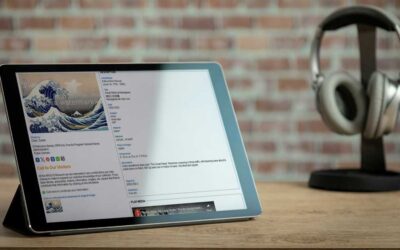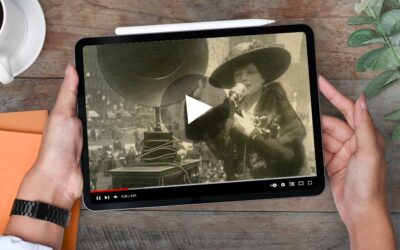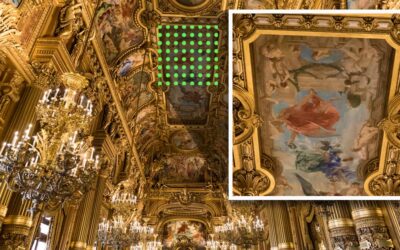Prioritize These Remote Museum Projects During Coronavirus—Part 1

Rachael Cristine Woody
The coronavirus has forced museums to close and send staff home. The good news is that the internet and tools such as Zoom and Slack are available to help support entire organizations forced into a remote work situation. Museum staff no longer have access to collections, but that doesn’t mean they don’t have work to do.
While the pandemic presents extreme challenges for us personally and professionally, it has offered us an opportunity to reflect on past practices, improve our systems, and implement better strategies. We can clean up digital messes in the collections, review digital collection management and strategies, plan for future digital projects, and improve museum management policies. This post and a subsequent post will outline six project areas museum staff can work on remotely, with links to resources that support your work. This week we’re covering: digital asset cleanup, digital collections management, and digital strategy. Next week we’ll focus on: future project preparation, museum management, and museum advocacy.
Digital Asset Cleanup
No need to feel any shame here—we all have digital messes to clean up. File naming conventions change, staff and volunteers can vary on how they followed guidelines, and sometimes there were no best practices put in place to follow.
The following are activities to consider for digital asset cleanup:
- Assess file naming conventions, document variations, and make corrections.
- Organize your assets consistently. Is it by collection, exhibition, or?
- Dedupe your files. Sometimes things get scanned twice or at different resolutions. How many copies do you need and at what resolutions?
- Upload or migrate your assets. Depending on workflow, it’s likely there are some things that have been scanned but haven’t migrated to the appropriate place.
Digital Collections Management
Unless all of your collections are online and 100% perfect, you will always have digital collections management tasks to do. This is the nature of digital collections management, especially if the collection is growing through active acquisition.
This section includes common digital collection management activities that can be performed remotely:
- Initiate metadata cleanup by reviewing metadata against current museum standards, documenting changes needed, putting a plan in place, and doing clean up.
- Perform description creation or expansion for records that need improvement or are stub records that could benefit from further description.
- Upload more collection content and create metadata for new items if there are digitized items that haven’t made it into the museum CMS.
- Consider digital project prioritization for current and future projects.
- Assess item records: how well do they adhere to current best practices? Identify areas that need additional work and plan to address areas marked for improvement.
- Perform a statistics review and get familiar with your collection statistics (for example: through a CMS dashboard). See how they may differ during this period where everyone is online because they can’t be outside. Statistics help you track collection use and are a powerful advocacy tool.
- Establish (or re-establish) museum CMS best practices, implement sustainable cataloging methods, and include effective workflows.
- Craft a CMS template to maintain consistent levels of cataloging, increase record accuracy, and improve the user experience.
And go grab your free copy of my e-book: How to Select, Buy, and Use a Museum CMS!
Digital Strategy
Now is an excellent time to pause and take stock. What’s the museum’s digital strategy? How can it be improved? The reality of what it means for the museum to be closed is putting pressure on our digital resources to perform. There are bound to be cracks in our digital work and we need to reevaluate our strategies for how we use our digital collections.
This section includes areas of digital collections management that require a well thought out strategy:
- Review opportunities for the museum CMS to help museum priorities and museum challenges where the CMS can help (part 1 and part 2).
- Read up on what it takes to build a comprehensive museum digital program and brainstorm adjustments you can make toward a better digital program.
- Get to know your museum’s digital user types and their expectations and consider what museum engagement looks like for younger generations.
- Implement these five methods to improve the museum digital user experience to increase traffic to your museum’s CMS, improve your engagement statistics, and gain more evidence on the value of your digital collections.
- Learn how a museum’s online presence is critical to its income stream and what you can do online to ensure those income streams are healthy.
- Consider how the museum’s CMS can be used on social media platforms and make a social media plan to share collection content on the museum’s social channels.
Tune in Next Week…
We’ll continue this series next week with the following project areas: future project preparation, museum management, and museum advocacy.

Rachael Cristine Woody
Consultant, author, and blogger Rachael Cristine Woody advises on museum strategies, collections management, grant writing and the future of museums for a wide variety of clients. Read Ms. Woody’s other blog posts and check out Lucidea’s unrivaled CMS, Argus, that empowers you to pursue your digital museum vision and make it a reality.
Similar Posts
The CMS Digital Exhibit and Story Pathways
Digital exhibits provide powerful ways to engage audiences, but choosing the right story pathway is key. Explore how different exhibit structures—linear vs. multi-pathway—shape the visitor journey.
Captivating Story Delivery with a Multimedia Player
Explore how museums can enhance storytelling with multimedia players, using audio-visual materials and archival content to create engaging digital narratives.
How to Use Slideshows and Flipbooks to Offer Engaging Museum Story Visuals
Museums thrive on storytelling, and the right digital tools can make all the difference. Slideshows and flipbooks offer an engaging way to showcase collections, drawing visitors in with dynamic visuals and interactive elements.
Zooming Into Story Details:
How Museums Can Enhance Storytelling with Visual Tools
Visual tools such as zoom are crowd pleasers when presenting visual content online, allowing museums to create immersive and engaging digital experiences.




Leave a Comment
Comments are reviewed and must adhere to our comments policy.
0 Comments